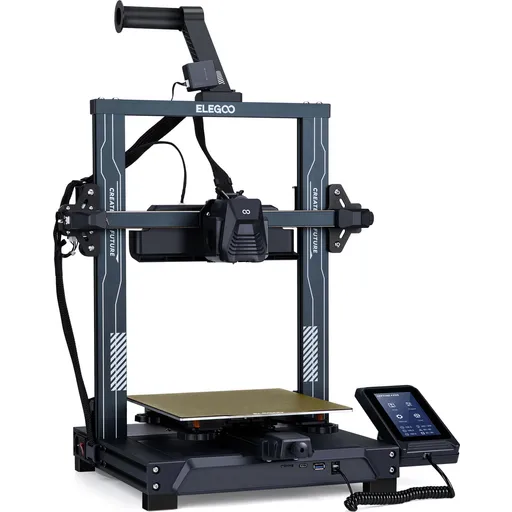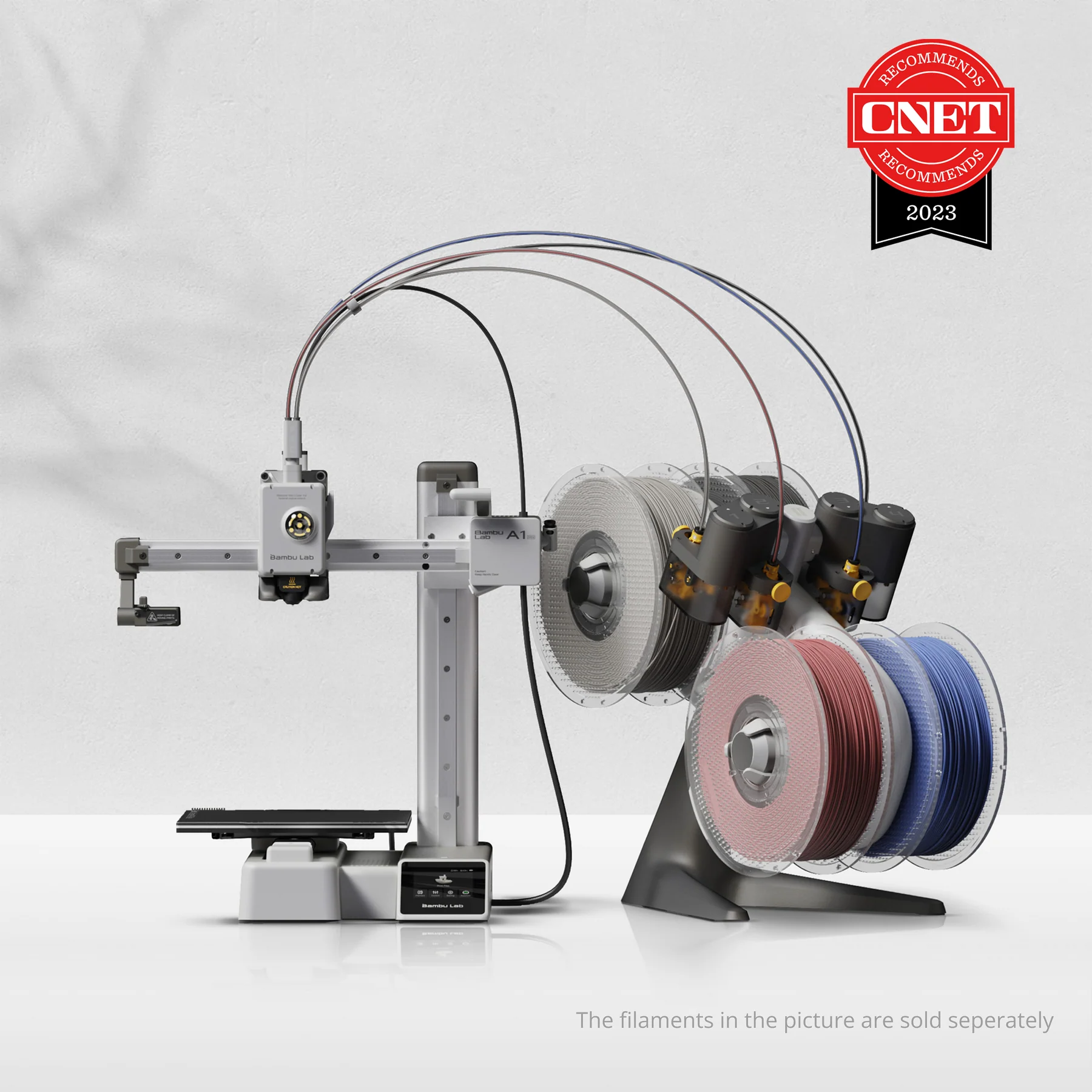Compare Neptune 4 PRO vs A1 Mini
Comparison between the best 3D printers
Choose the best 3D printer at the best price. The cheapest 3D printers are here.
Buy a 3D printer here with 3D Fila.
 |
 |
|
| Model | Neptune 4 PRO |
A1 Mini |
| Printing Material | Filament | Filament |
| Buy Filament for Elegoo Neptune 4 PRO | Buy Filament forBambu Lab A1 Mini | |
| Estimated price | $359,00 | $549,00 |
| Manufacturer | Elegoo | Bambu Lab |
| Release Year | 2023 | 2023 |
| Print Volume [mm] | 225x225x265 | 180x180x180 |
| Printer Size [mm] | 475x445x515 | 315x347x365 |
| Weight [kg] | 8,9 | 5,5 |
| Power Loss Recovery | YES | YES |
| Enclosed printer | NO | NO |
| Bed Leveling | Automatic | Automatic |
| Filament End Sensor | YES | YES |
| Bed type | Heated | Heated |
| Power supply system | Direct Drive | Direct Drive |
| Standard nozzle | 0,4 | 0,4 |
| Maximum Nozzle Temperature [°C] | 300 | 300 |
| Maximum Bed Temperature [°C] | 110 | 80 |
| Maximum printing speed [mm/s] | 500 | 500 |
| Filament holder | YES | YES |
| Camera for supervision | NO | NO |
| Recommended filaments | PLA, PLA+, TPU, PETG, Nylon, ABS | PLA, PETG, TPU, PVA |
| Recommended slicers | Bambu Studio, Super Slicer, Cura, Prusa Slicer, Orca | Bambu Studio, Super Slicer, Cura, Prusa Slicer, Orca |
| Maximum Resolution [mm] | 0,1 | 0,1 |
| Processor | ARM 64 bit | 32-bit Silenciosa |
| Display | Touchscreen 4,3'' | Touchscreen 2,4'' |
| Power Supply | 310 W | 150 W |
| Connectivity | USB, microSD | Wifi, Bambu bus, Cartão SD |
| Operating systems | Windows, Linux, Macbook | Windows, Linux, Macbook |
| Date of registration in the system | 2024-07-02 | 2024-04-10 |
| Release date | 2023 | 2023 |
| Extra features | The Elegoo Neptune 4 Pro stands out for its advanced features, including pre-installed Klipper firmware, a dual-gear direct extruder with a 5.2:1 ratio, a high-temperature nozzle (up to 300°C), a flexible magnetic PEI platform, efficient cooling fans, and a 121-point auto-leveling system. The printer also features a 4.3-inch touchscreen interface, dual linear bars on the X and Y axes, and a segmented heated bed for energy savings. | The Bambu Lab A1 Mini stands out not only for its impressive speed and automatic calibration, but also for its multi-color printing capability thanks to AMS Lite. This innovative system makes multi-color printing easy, making it accessible to everyone. AMS Lite, specific to the A1 Mini, supports up to four different materials simultaneously, providing creative freedom without complications. With comprehensive sensors for energy monitoring and recovery, a camera for timelapses and Wi-Fi control, the A1 Mini and AMS Lite together offer an intuitive and advanced 3D printing experience, ideal for materials such as PLA, PETG and TPU, and designed for simplicity and fast maintenance with quick-change nozzles. |
| Support for multiple colors and materials (AMS and CFS) | NO | YES |
Notes * |
||
| Cost-benefit | 7 / 10 | 7 / 10 |
| Hardware | 3.2 / 10 | 4.8 / 10 |
| Tela | . | . |
| Print volume | 3 / 10 | 3 / 10 |
| Performance | 4 / 10 | 4 / 10 |
Conclusion |
| In comparing the Elegoo Neptune 4 Pro and the Bambu Lab A1 Mini, both printers bring unique features and specifications suitable for varying user needs. The Elegoo Neptune 4 Pro is a more economical option while offering a decent print volume and a robust set of advanced features, including specialized firmware and a more extensive heating capability. Its higher print capacity and innovative bed design provide additional value for users looking for versatility in materials and efficient performance. On the other hand, the Bambu Lab A1 Mini, while relatively pricier, excels in multi-color printing capabilities due to its AMS Lite system, making it an attractive choice for users interested in creative and complex projects. Its superior connectivity options and additional ease of use features, such as automatic calibration, enhance the overall user experience. Ultimately, the choice between the two will depend on user priorities: those seeking cost-effectiveness and a larger print volume may prefer the Elegoo Neptune 4 Pro, whereas those who value multi-color capabilities and intuitive features might find the Bambu Lab A1 Mini worth the extra investment. Both printers offer commendable performance but cater to different printing needs and budgets, making them suitable for distinct user preferences in the 3D printing landscape. |

